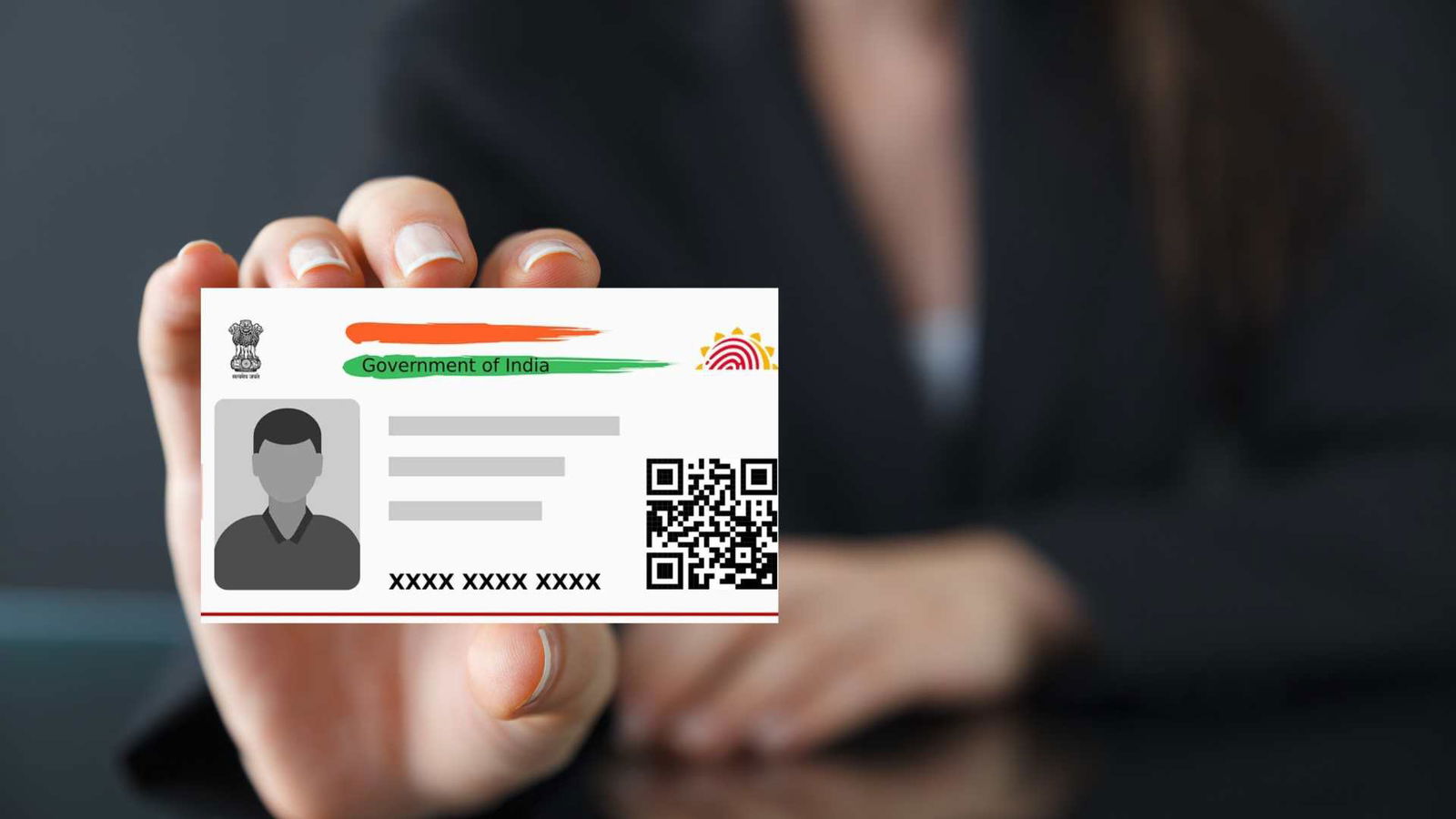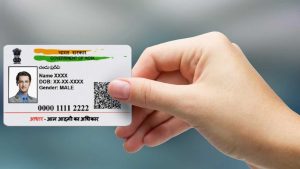![]()
Change Your Name on Aadhaar Card
In the intricate tapestry of life, marriage stands as a transformative milestone, bringing with it a multitude of changes, both personal and legal. Among the many considerations that arise after matrimonial vows is the choice to adopt a new name, often symbolizing the union of two individuals into a shared identity. In the context of India, where the Aadhaar card is a cornerstone of identification, the process of changing one’s name after marriage requires a systematic approach. This article embarks on a comprehensive exploration of the intricacies involved in navigating the process of changing your name on the Aadhaar card post-marriage.
The Aadhaar card, a ubiquitous 12-digit unique identification number issued by the Unique Identification Authority of India (UIDAI), encapsulates an individual’s biometric and demographic information. Its significance in establishing identity and residence necessitates meticulous attention to detail when life events, such as marriage, prompt the need for a name change. This framework makes understanding the legal foundations, procedural nuances, and step-by-step guidance imperative.
As individuals embark on the journey of altering their identity markers post-marriage, this article seeks to serve as a guiding compass, elucidating the steps involved in the process of changing one’s name on the Aadhaar card. From the legal basis for name changes to the practical steps to be taken at the Aadhaar Enrolment Centre, this exploration aims to empower individuals with the knowledge needed to navigate this bureaucratic terrain seamlessly. In the realm of personal and legal transformations, the process of updating one’s Aadhaar card after marriage becomes not only a bureaucratic necessity but a tangible reflection of life’s evolving chapters.
Understanding the Importance of Aadhaar
The Aadhaar card, introduced by the Unique Identification Authority of India (UIDAI), holds paramount importance in the Indian administrative landscape. This 12-digit unique identification number is a cornerstone for individuals’ identity verification, providing comprehensive proof of identity and address. Understanding the significance of Aadhaar involves recognizing its multifaceted role in various aspects of daily life and government interactions.
- Universal Identification: Aadhaar aims to provide every resident of India with a unique identification number, ensuring that each individual is distinct in the government’s records. This universal identification system streamlines interactions with government agencies, financial institutions, and other service providers.
- Simplifying Government Services: Aadhaar facilitates the efficient delivery of government services by serving as a common denominator for authentication. It has streamlined processes for availing subsidies, pensions, and other welfare benefits, reducing bureaucratic hurdles and minimizing fraudulent claims.
- Financial Inclusion: Aadhaar plays a pivotal role in promoting financial inclusion. It is linked to bank accounts, making it easier for individuals to access financial services, receive government subsidies directly in their accounts, and participate in the formal economy.
- Digital India Initiative: As part of the Digital India initiative, Aadhaar promotes a digital identity framework. The integration of Aadhaar with various services enables online authentication, making transactions and verifications faster, more secure, and more convenient.
- Address Verification: The Aadhaar card serves as a valid proof of address. Its role in address verification is crucial for individuals when applying for various services, such as obtaining a new SIM card, opening a bank account, or updating records with government agencies.
- Mobile Number Linking: Aadhaar is linked to mobile numbers, providing an additional layer of security for telecom services. This linkage helps curb the unauthorized use of mobile connections and aids in the identification of mobile users.
- Biometric Authentication: Aadhaar’s incorporation of biometric data (fingerprint and iris scans) enhances the accuracy and security of identity verification. Biometric authentication adds an extra layer of protection against identity theft and ensures the uniqueness of the identity associated with the Aadhaar number.
- E-Governance and Digital Signatures: Aadhaar facilitates e-governance by enabling individuals to digitally sign documents. This not only reduces paperwork but also enhances the authenticity of digital transactions and communications, contributing to the overall vision of a paperless, efficient governance system.
Legal Basis for Name Change after Marriage
In India, the legal basis for changing one’s name after marriage is primarily rooted in the Marriage Registration Act. This legislation acknowledges and provides a framework for individuals who wish to modify their names legally following the solemnization of their marriage. According to this act, individuals have the right to adopt a new name after marriage, and the changed name can be reflected in various legal documents, including the Aadhaar card.
To initiate the name change process, obtaining a marriage certificate is crucial. The marriage certificate serves as legal proof of the marital union and becomes the foundation for updating personal information. This legal provision recognizes the right to choose one’s name and emphasizes the importance of maintaining accurate and updated records. As individuals exercise their choice to adopt a new name, the legal framework ensures a systematic and legitimate process, providing a foundation for seamless transitions in personal identification after the significant life event of marriage.
Step-by-Step Guide to Changing Your Name on Aadhaar Card After Marriage:
Changing your name on the Aadhaar card after marriage involves a systematic process that requires attention to detail. Here’s a step-by-step guide to help you navigate this procedure:
- Update Name in Marriage Certificate: Before initiating the name change process on your Aadhaar card, ensure that your name is officially changed in your marriage certificate. The marriage certificate serves as legal proof of the name change and is a prerequisite for updating other official documents.
- Gather Required Documents: Collect all necessary documents, including your marriage certificate, existing Aadhaar card, proof of residence, and a self-attested copy of your spouse’s Aadhaar card.
- Visit the Aadhaar Enrolment Centre: Locate the nearest Aadhaar Enrolment Centre and visit in person. It’s advisable to check the official UIDAI website for the nearest centre and its operating hours.
- Fill out the Aadhaar Update Form: Obtain the Aadhaar Update/Correction Form from the enrollment centre near you or download it from the UIDAI website. Fill in the required details, ensuring accuracy and consistency with the information in your marriage certificate.
- Biometric Authentication: For authentication, provide your biometric data, including fingerprints and iris scans. Verifying your identity and linking the updated information to your Aadhaar number is crucial.
- Submit Documents: Along with the filled-up form, submit the necessary documents, including the marriage certificate and proof of residence. Ensure that all documents are self-attested.
- Receive Acknowledgment Slip: After submitting the documents, you will receive an acknowledgement slip containing the Update Request Number (URN). This number allows you to track the status of your name change request.
- Check Aadhaar Update Status: Use the URN to check the status of your Aadhaar update online through the official UIDAI website. The status will indicate whether your request is under review, approved, or rejected.
- Download e-Aadhaar: Once your name change request is approved, download the updated Aadhaar card, known as e-Aadhaar, from the UIDAI website. This electronic version is equally valid as the physical card.
Conclusion
In conclusion, the process of changing your name on the Aadhaar card after marriage is a significant yet manageable endeavour. Recognizing the importance of the Aadhaar card as a foundational identity document in India, ensuring the accuracy of personal information, especially after a life-altering event like marriage, becomes crucial. The legal framework supporting name changes after marriage, coupled with the systematic steps outlined in this guide, empowers individuals to confidently navigate the bureaucratic landscape.
By understanding the necessity of updating the name on the Aadhaar card, individuals can proactively gather the required documents, visit the Aadhaar Enrolment Centre, and follow the step-by-step procedure outlined by the Unique Identification Authority of India (UIDAI). The acknowledgement slip and subsequent tracking of the update status provide transparency and assurance throughout the process.
In embracing this journey, individuals honour tradition and fulfil legal obligations, ensuring that their identity documents accurately reflect the changes in their personal lives. The availability of e-Aadhaar as a digital alternative further facilitates easy access to updated information. Overall, the name change process on the Aadhaar card after marriage exemplifies the harmonious integration of tradition, legal compliance, and technological convenience in contemporary Indian society.
Kanakkupillai, with its expertise in legal and administrative services, can be your trusted guide in navigating the process of changing your name on your Aadhaar Card after marriage. Our professional assistance ensures a seamless transition through the bureaucratic steps, from updating your name on the marriage certificate to submitting the necessary documents at the Aadhaar Enrolment Centre.
Kanakkupillai streamlines the process, saving you time and effort while ensuring compliance with legal requirements. Don’t let the complexities of paperwork and procedures overwhelm you; let Kanakkupillai be your partner in this important journey. Take the first step towards a hassle-free name change process by contacting Kanakkupillai today – your reliable ally in managing legal transitions with efficiency and expertise at 7305 345 345!!





